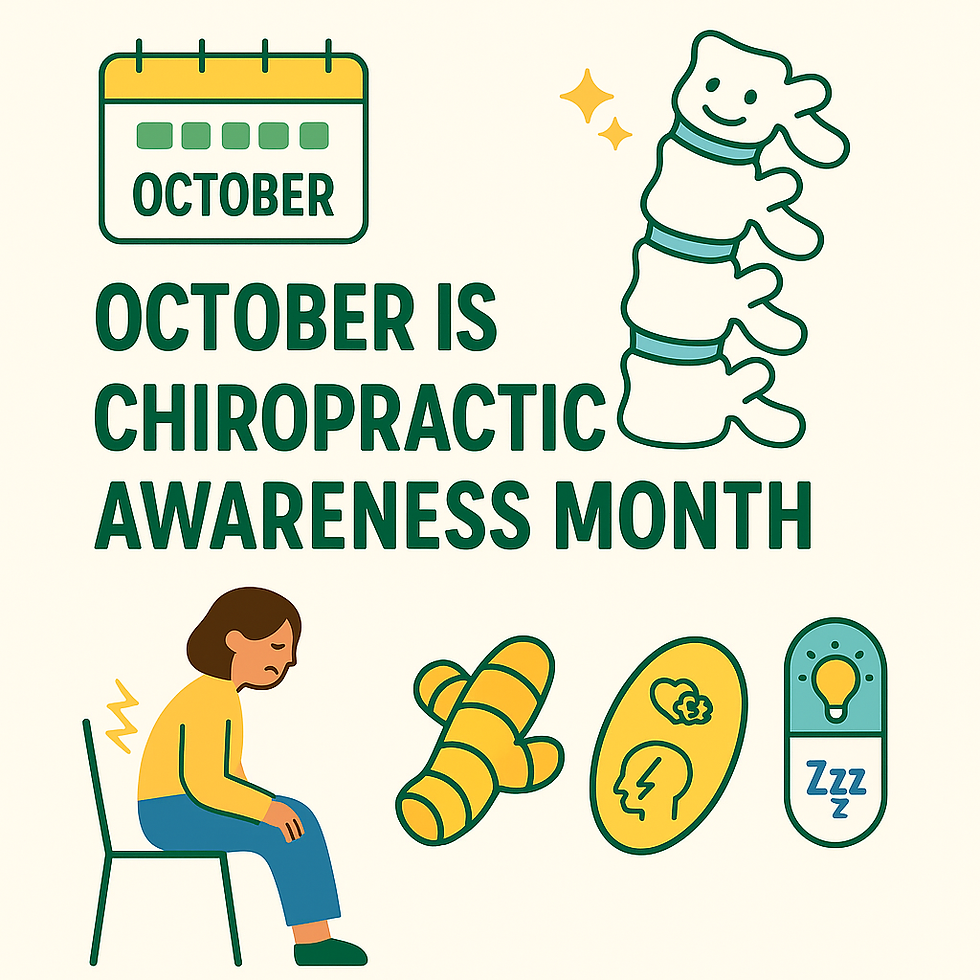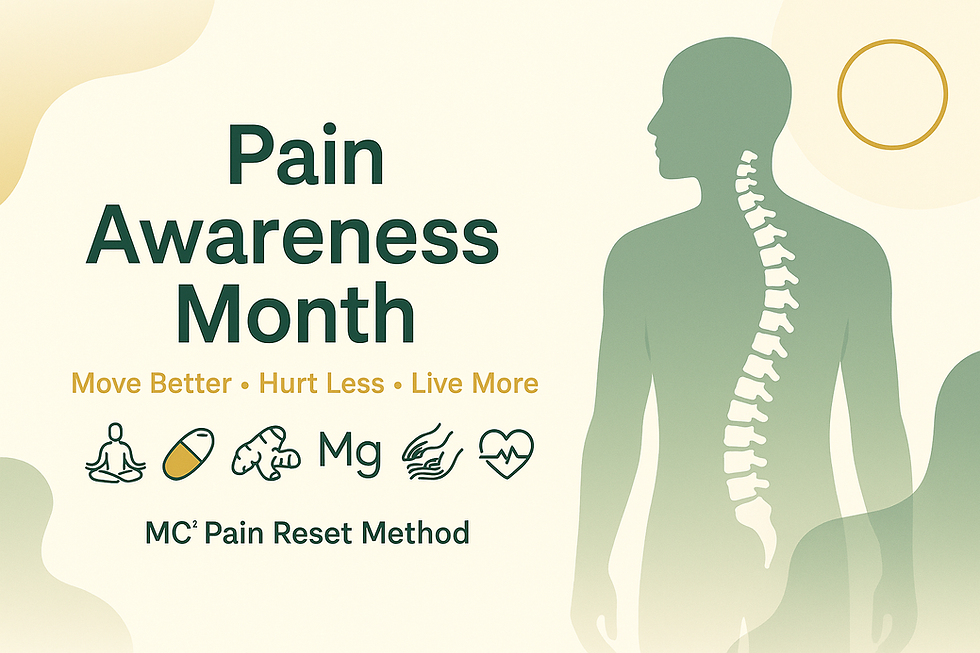Who gets Long COVID and Why?
- Nov 10, 2021
- 7 min read
Updated: Dec 15, 2021
Hello, everybody. Welcome to another edition of Functional Medicine Friday. This is Dr. Julie McLaughlin at McLaughlin care. So today our topic is going to be about long COVID. And what are some of the things that we know about COVID and long COVID?
So we know COVID-19 is been here for almost two years now, right and it can happen to anyone. It can happen to patients who've never been vaccinated, to patients who've been vaccinated, to patients who've had COVID, and to patients who've had COVID and been vaccinated. It literally can happen to anyone. And it happened to me last spring, I got COVID pretty severe. I was hospitalized multiple times for it. And I ended up with long COVID. So let's see what that kind of looks like.
The typical clinical course of COVID-19 is that you have an exposure, right? You have this first little part where you're going to get exposed. Your symptoms could be mild, or they could be severe. The whole symptom onset lasts about two weeks in a mild form. And you recover in the more severe form. Your symptoms are going to start around day five to six, and you're going to have three to six weeks of severe symptoms.
So this is more the mild and moderate type of COVID illness. And so about 30% of people who get COVID can get long COVID and it doesn't matter if you're asymptomatic, if you have mild COVID or you have severe COVID you still are at risk of getting long COVID for 85% of long COVID patients have actually the mild form and didn't need to be hospitalized.
So sometimes we only think as patients who have this fear form, and it's not. So these are the phases of COVID. The acute COVID is the two-week symptom. The post-acute COVID is up to 12 weeks and then the chronic COVID is greater than 12 weeks. So in the post-acute COVID and the chronic COVID, this is really where we're starting to see patients who have been termed long COVID.
And that's when those signs and symptoms and new signs and symptoms continue after initially getting affected by COVID. And so 39 million-plus people with SARSCOV2 infections and county in the United States, and approximately 30% of those will experience. They call it post-acute COVID syndrome or long COVID.
So let's look at some of the therapeutic determinations and monitoring. So in patients that have mild COVID, they're going to have a fever, sore throat, cough, malaise, headache, nausea, diarrhea, loss, to taste and smell. They're not going to have any pneumonia on their chest x-rays or cat scans. And they're not going to have shortness of breath at all.
In the moderate case, they're going to have some radiological findings of pneumonia fever, and respiratory symptoms like shortness of breath, their oxygen saturation on the pulse oximeter is going to be at least 90 for normal room air. If you have severe COVID you're saturated oxygen is going to be less than 94%. Your arterial partial pressure of oxygen is going to be less than 300 millimeters of mercury. You will have lung infiltrates greater than 50% within 24 to 48 hours of acquiring COVID. And this can be seen on chest x-rays or cat scan.
You're going to have a rapid heart rate of greater than 125 and a rapid respiratory rate of greater or equal to 30 breaths per minute. Now I was in the severe COVID category in critical category of COVID. They're going to have respiratory failure requiring mechanical ventilation. Sometimes they call it ECMO high flow, nasal oxygen cannulas in sometimes even invasive ventilation, right?
They can go into septic shock. They can get elevated blood pressure. They can get multiorgan dysfunction or cardiac and hepatic renal central nervous system and clotting diseases in critical patients. So there are eight organ systems affected by COVID the heart, the circulatory system, the lungs, the brain, the kidneys, the thyroid liver, and GI system.
So in the heart, COVID can cause mild carditis and TAC nocardia, which is rapid heart rate in the circulatory system. It can cause endothelial disease, blood clotting, microvascular damage tissue hypoxia. That means tissue that's starved for oxygen or COVID toes in the lungs. That's when you're going to see the SARS Kobe to pneumonia or fibrosis, this is a picture of a COVID patient's lungs here on the left. You can see all this puffy white cotton knee looking stuff in the lungs that is SARS cov two pneumonia in a severe case, this is a clear lungs.
So a clear lung, you're going to see nice dark spaces where the air is in the lungs. And you can see how little dark space this patient has because of the car COVID pneumonia. So it also affects the brain and the central nervous system. It can cause stroke mast cell activation, which I'll talk about in another Functional Medicine Friday, seizures, jamborees syndrome, brain fog, dizziness, central nervous system dysregulation with things like pots, which is postural orthostatic tachycardia, but means if you sit up or stand up, your heart rate goes crazy. Neural inflammation, PTSD, depression, anxiety, increased risk of developing Parkinson's and Alzheimer's disease.
It can affect the thyroid either hyper or hypo, and it can make an exacerbated autoimmune condition that you may have already had, or it could create a new one on the kidneys. It causes low urine output, infrequent urination, kidney dysfunction in kidney failure. It affects the liver due to the rush of the cytokines, inflammatory particles in our body, and the liver becomes damaged. And sometimes it can't be repaired in the GI system.
We know that it causes nausea, vomiting, diarrhea, like pancreas to dysfunction causing diabetes, as well as a leaky gut or barrier damage. So expansion of a viral burdens, when you get COVID, if you have other viruses that are maybe dormant in your system, it can expand those and trigger those to become active again, as well like Epstein BARR, chronic fatigue syndrome, HSV, parvo, mycoplasma, and hepatitis.
So exactly what is long COVID and who gets it. So there's a lot of different names for it. They'll call it post acute sequela of SARS, cov, two infection, or the past six persistent COVID-19 long COVID long haulers, post acute COVID-19 chronic COVID-19 post COVID syndrome. So these are the names that are interchangeable for the same condition. Remember, in order to be classified of having this, your symptoms have to be greater than 12 weeks after your infraction. And there's no other explained diagnosis.
So what can trigger this? Right? That was my biggest question. What could trigger this? Well? Genetics can trigger it and it happens to fall more in men than in women, diabetes, cardiovascular disease, pre-existing conditions, obesity, mass, cell dysfunction.
And again, we're going to talk a little bit more about that in another functional medicine Friday, but when those mast cells become dysfunctional, that could trigger the long COVID menopause or menopause. So hormonal changes any kind of previous existing autoimmune disease or immunocompromised disease and something that's called a TOFI. So it's asthma eczema and allergic rhinitis. You have those three things together.
It could trigger long haul COVID so long COVID patients is a relatively new phenomenon. It's very under-researched is not well-recognized, but it could be a collection of four different syndromes, post viral fatigue, fluctuating multi-symptom problem, lasting organ damage and post intensive care syndrome. So depending on what symptoms that patient got, it could be a collection of all four of these together.
So the fluctuating and the multi-system symptoms need to be acknowledged. The common theme is that the symptoms arise in one physiological symptom, then it debates, and then it goes to a different one. So in other words, the most common symptom of long COVID is that your symptoms change. You may think you're getting better.
And then a new one arises and there's significant psychological and social impact that will have long-term consequences for individuals and for the society if this long Covid is not managed well. So like I said, there's more than 50 symptoms of long COVID, but the most common symptom is it's a symptom is always changing. You can pause the video if you want to look at all the symptoms, but I have them listed out here and you can see there are a lot, and I can tell you they're not fun.
So as a chiropractor, we also are interested in symptoms that could be presenting as pain. Some people think that they might come in with headaches or back pain just from typical causes, but 26% of the long COVID symptoms are pain related. So if you're having pain and you had COVID, you might look into if you have long COVID. So nearly 30% of infected people get this condition.
But over 75% of people admitted to the hospital have abnormal patient outcome measures three months or longer. And 50% of the people admitted to the hospital will have symptoms 12 months or longer. And some of the symptoms can be worse at six months or at 12 months than they were at six months. So it doesn't act like a normal condition where it just gradually gets better over time.
It can have outbursts where it can be worse later on. So I can tell you the pain and suffering is real. It has really caused me not to be able to do physical adjustments in the office at this time. I'm hoping to get back to that. It's really affected my breathing and my heart rate as well as probably 50 of those other symptoms.
The pain is real and the suffering is real on this, but it's very, very hard to measure. So that's it for Functional Medicine Friday, and I'll be talking more about long COVID in some of our upcoming talks. If you have questions on this topic or any other topic, please send us a message and I'll be happy to do a little video for Functional Medicine Friday on those too, have a great day.





Comments